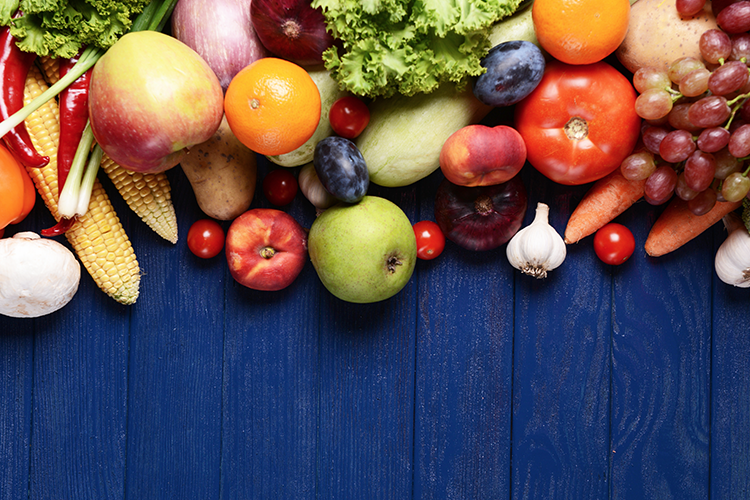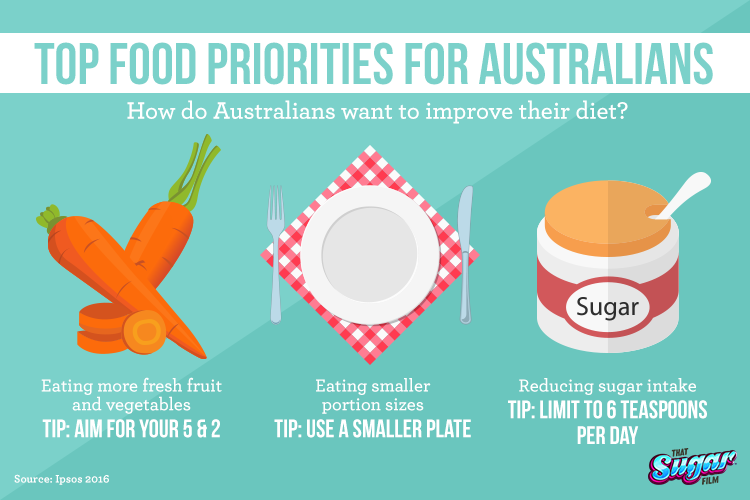Blog
What do we want to eat? Consumer trends in Australia
 When it comes to Aussie’s attitude toward food and health, ranked at number one is the belief that too much sugar is in packaged products. And concerns for the sweet stuff in our everyday diet outweighs those around fat or salt, according to a recently released report.1
When it comes to Aussie’s attitude toward food and health, ranked at number one is the belief that too much sugar is in packaged products. And concerns for the sweet stuff in our everyday diet outweighs those around fat or salt, according to a recently released report.1
The Food CHATS report, by market research company Ipsos, looks into consumer behaviour, attitudes and consumption around food and health, covering topics such as what Australians believe it is to be healthy, what is influencing food decisions, and the sugar we devour.
Of the 3,002 Aussies who took part in the survey, food priorities in 2016 were:
- eating more fresh fruit and vegetables (40%)
- smaller portion sizes (31%)
- reducing sugar intake from food (24%)
- eating healthier snacks (23%)
- cutting down on fat (23%)
While Australians had some good ideas on what it means to eat well, such as more veg and fruit, less sugar, and less food overall, there is still a propensity toward low-fat eating, and the top drivers for food and drink purchase are taste (72%) and price (63%).
Sugar
According to the report, 1 in 4 of those surveyed has attempted to reduce added sugar intake, despite half agreeing there is too much added sugar in packaged food and drink and reducing sugar added to food was the number three food and health priority.
In addition, the survey results indicated only 3% of adults would choose artificial or intense sweetener alternatives over sugar.
So, we have the awareness but are still working on how we will reduce sugar intake.
Fats
Cutting down on fat is a priority for nearly a quarter of those surveyed. 3% were noted to prioritise increasing intake of unsaturated fat. However, the study did not report on specifics of monounsaturated fats, omega-6 and omega-3 polyunsaturated fats, or the sources of these. Each is an important distinction to be made in nutrition and health education.
However various sources of saturated fats were measured where people would like to reduce intake, including fried-snack-pastry-cake foods (13%); trimmings from meat (9%); and dairy (7%).
As with unsaturated fats above, it is important we do not lump all sources of saturated fat together. The quality of the food that is rich in saturated fat matters. Heavily processed pastries or junk food are of a different quality than using a dollop 100% grass-fed butter to grease the pan when cooking a whole food meal from scratch.
Drivers of purchase
Primary considerations for what Australians buy when at the front line and getting in and out of the supermarket are taste, price, and discounts. This is over buying food for health, despite food priorities angled toward eating better.
“Our study shows that while making healthier food choices is a key priority for Australians, the typical, everyday shopper is still struggling to balance healthiness against convenience and their budget,” said Kathy Benson, Ipsos Strategy & Research Director.
And interestingly, nutritional information is more influential in food purchasing decisions than the Health Star Rating system.
“Our budgets still have a higher priority in-store than our health aspirations,” said Benson. “Easy decisions rule and finding a healthy choice is still a challenge for many despite the introduction of the Government’s ‘Health Star Rating’ system.”
Mostly, Aussies seem to know what is good for health when it comes to what they put in their gobs. For example, many of us understand too much added sugar ain’t great. But health alone is not enough of a priority to influence what food to buy, as there is so much affordable, hyper-palatable food ready-to-go.
Therefore, understanding what drives food purchases, like taste, affordability and convenience, is important to consider in incentivising the purchase of good quality fresh produce over the cheaper, less nutritious stuff.
By Angela Johnson (BHSc Nut. Med.)
References:
- Ipsos 2016, Food CHATs: Australia’s most comprehensive study integrating consumer attitudinal trends with consumption behaviour change, viewed 8 March 2017, <https://www.ipsos.com/sites/default/files/2016-06/023.1-Food-in-Australia.pdf>












